Why This 19th-Century Designer's Patterns Are All Over the Place Right Now
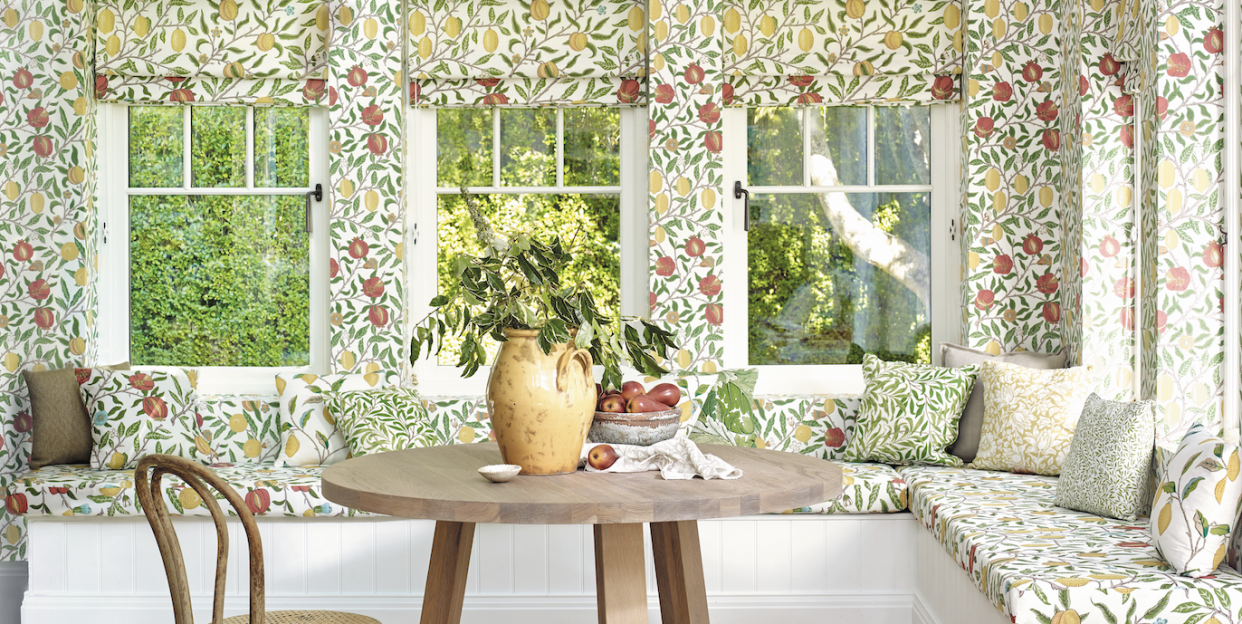
- Oops!Something went wrong.Please try again later.
"Hearst Magazines and Yahoo may earn commission or revenue on some items through the links below."
Think "pioneer of modern design," and, chances are, the first names that come to mind are Charles and Ray Eames, Le Corbusier, or Mies van der Rohe. But one of design history's most influential modernists is actually someone who was working a near-century before the midcentury scions: William Morris. As a pioneer of the Arts & Crafts movement, Morris fundamentally believed "that the decorative and domestic are as important as the art on the walls of our national galleries," says Keren Protheroe, Archivist at Morris & Co., the company Morris founded in 1861, and which is now owned by Sanderson Design Group.
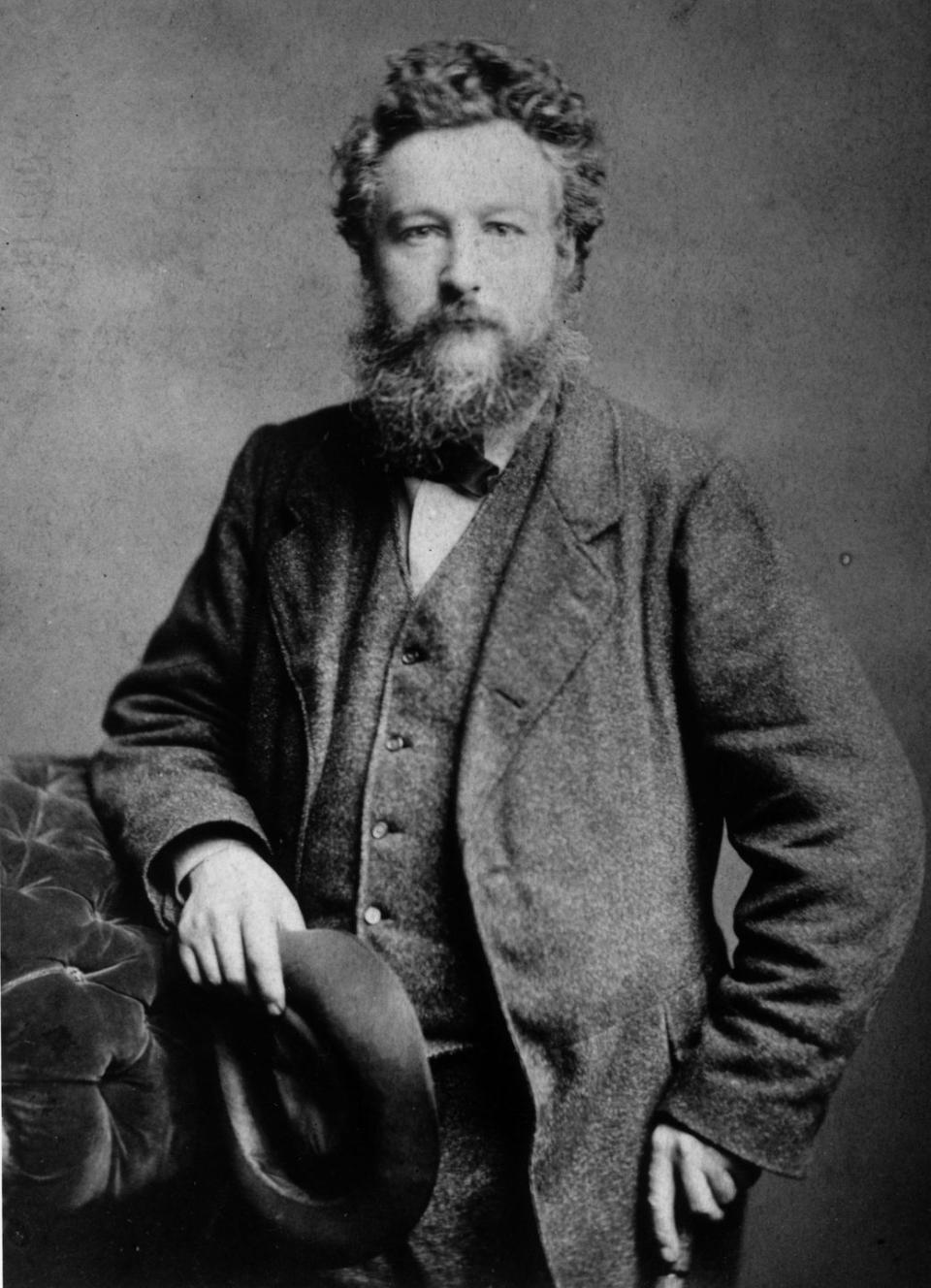
He's certainly the only 19th-century designer whose work can be found on collections at Williams-Sonoma, Dockatot, and covering the walls at hip candle purveyor Diptyque and trendy startup shoe brand Sarah Flint alike. The recent surge in "cottagecore" style spurred increased commercial demand for his patterns, but he also has remained wildly influential in art and design.
"Kehinde Wiley has noted how William Morris patterns have inspired some of his work," says Protheroe. "Set designers continue to showcase the patterns—we’ve seen them most recently in the Jungle Cruise movie, Queen’s Gambit, and even new holiday films including Love Hard and Castle for Christmas; that’s just to name a few."
So what is it about William Morris that's so enduring? "Even those who know little of Morris’s politics, research into traditional techniques, literary works, and campaigning for the preservation of ancient buildings can grasp that Morris was a heroic figure from a romantic age who argued the worth of artisanal values against the mechanizing and dehumanizing tendencies of the time," says Protheroe.
To put it simply: "He looked to the past and created something utterly modern."
Who was William Morris?
Born in 1834 in Essex, England, William Morris was a multi-hyphenate British creative who redefined traditional textiles and contributed to a range of other creative and academic disciplines. Morris studied Classics at Oxford University, where was a part of the "Birmingham set," a group of creative students who would go on to found the Arts and Crafts movement. In 1861, Morris founded Morris, Marshall, Faulkner & Co. with fellow members of the Birmingham Set. The firm would go on to become Morris & Co. after Morris assumed creative control in 1875.
What exactly did William Morris design?
In the design world, Morris is known for his textiles (and accompanying wallpapers), which tend to feature romantic, nature-inspired patterns. But, as was core to the ethos of the Arts and Crafts movement, these goods were part of a much larger ecosystem, one which bridged art and design (and past and present, and lifestyle with the goods that surrounded it).
"Woven textiles—their design, their structural ingenuity, and the role they play in creating pleasing, comfortable spaces—were formative in Morris’s broader vision of design," explains Protheroe. "The earliest wallpapers took their motifs and layouts from medieval tapestries and other early woven and embroidered wall-hangings. These, in turn, were influenced by Middle-Eastern pattern—so Morris’s design references were wide-ranging." Morris founded
What else was he known for?
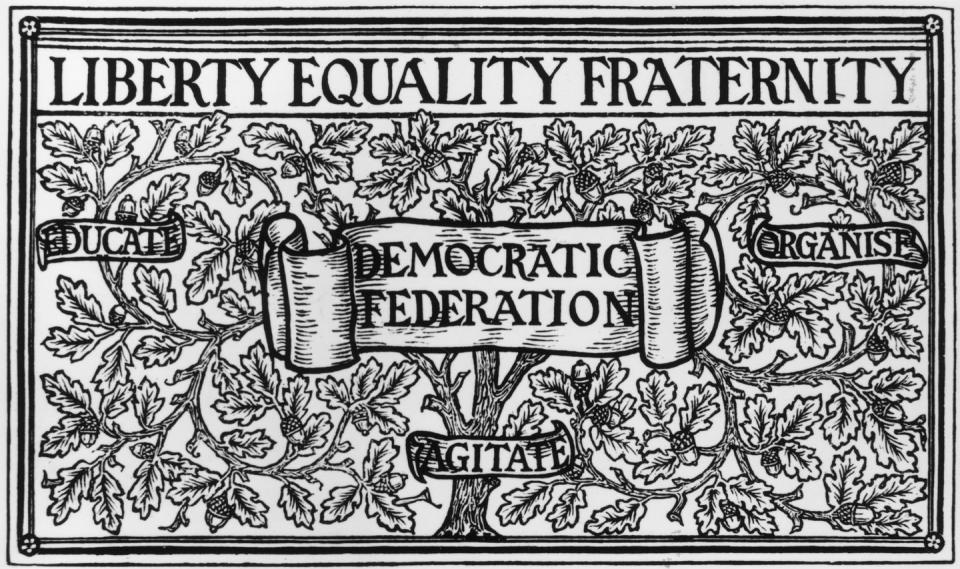
Part of the reason Morris's textile designs are so symbolic is that Morris himself was quite the polymath: In addition to designing fabrics and patterns, he was a published poet and novelist, devout naturalist and architectural conservationist, and passionate social activist. None of these interests existed independently—they all informed each other, resulting in a creative output that is richly layered.
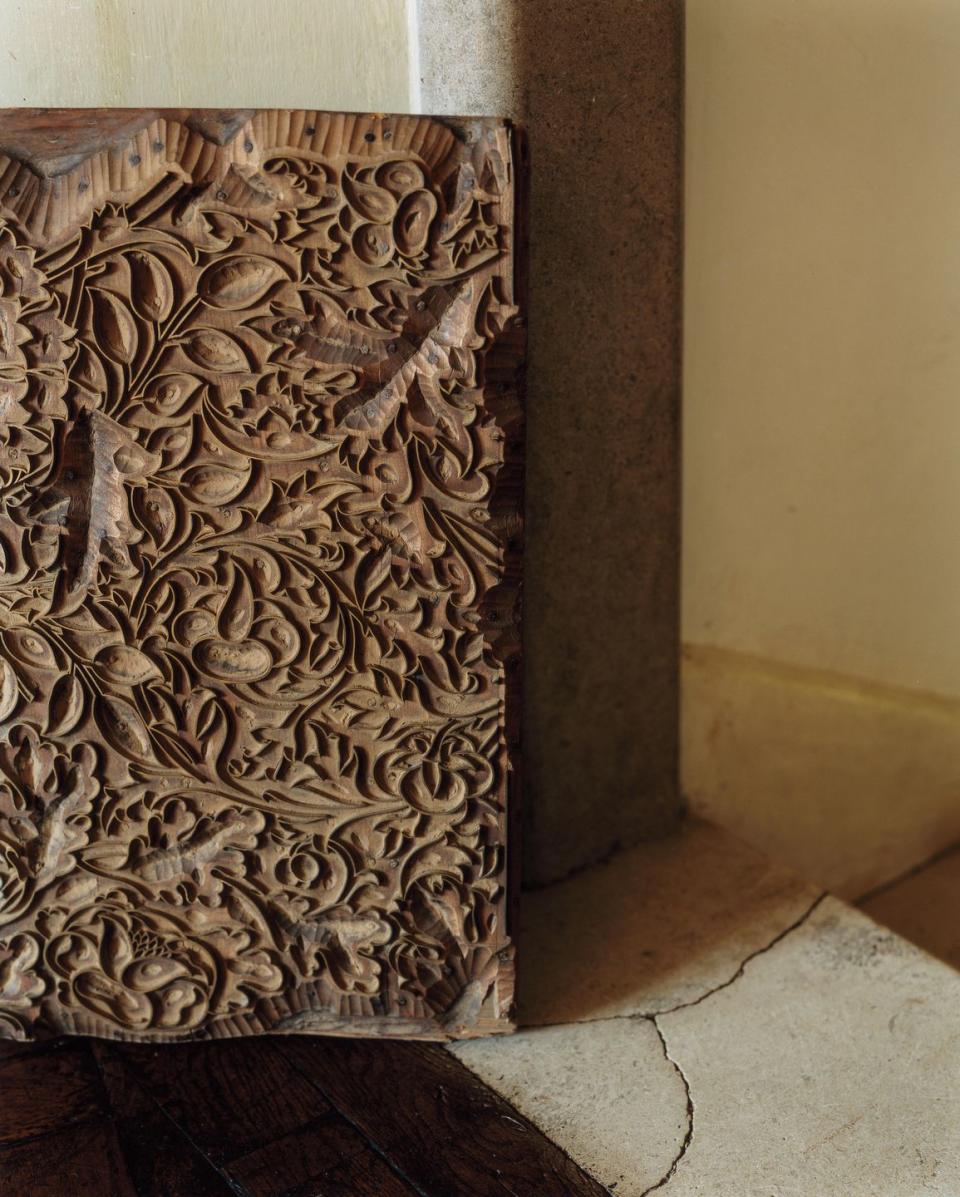
Want beautiful homes? We’ve got plenty. Let’s swoon over them together.
What techniques is Morris known for?
A scholar at heart, the ever-curious Morris was known for experimentation across disciplines. As Protheroe put it, "Morris was a scholar of techniques."
In the 1870s, Morris began experimenting with vegetable dyes; his interest in naturay dye techniques was further fueled by his work with Thomas Wardle, a printer and businessman who specialized in Indian dyeing techniques. Morris later gravitated towards the use of indigo as a natural dye, resulting in rich blue colors which can be seen throughout his work. "It was a triumph for Morris and a culmination of his research when he set up his Merton Abbey Mills workshop next to the Wandle river in London," Protheroe says. It housed the indigo dye-vats Morris used to print his most famous indigo discharge prints."
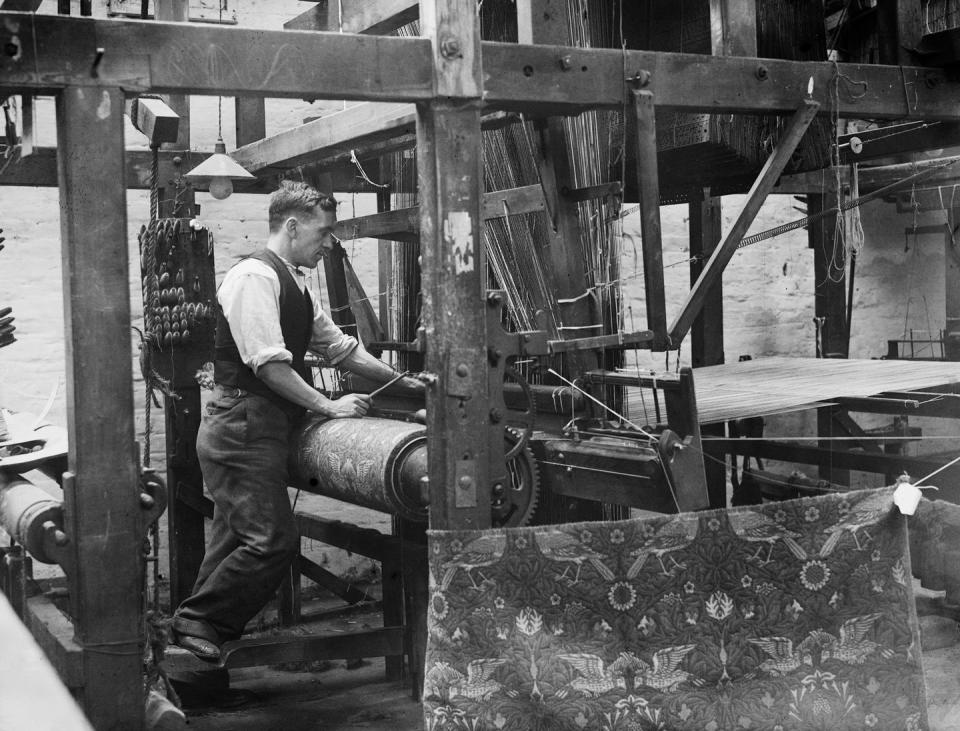
Why are his designs so enduring?
In England, Morris is somewhat of a father figure within multiple disciplines. "Morris’s life and work have been taught in our art schools since the 1960s, and even before, his example shaped the practices of Britain’s most progressive manufacturing industries," says Protheroe. In this respect, there has always been an influential audience for his work."
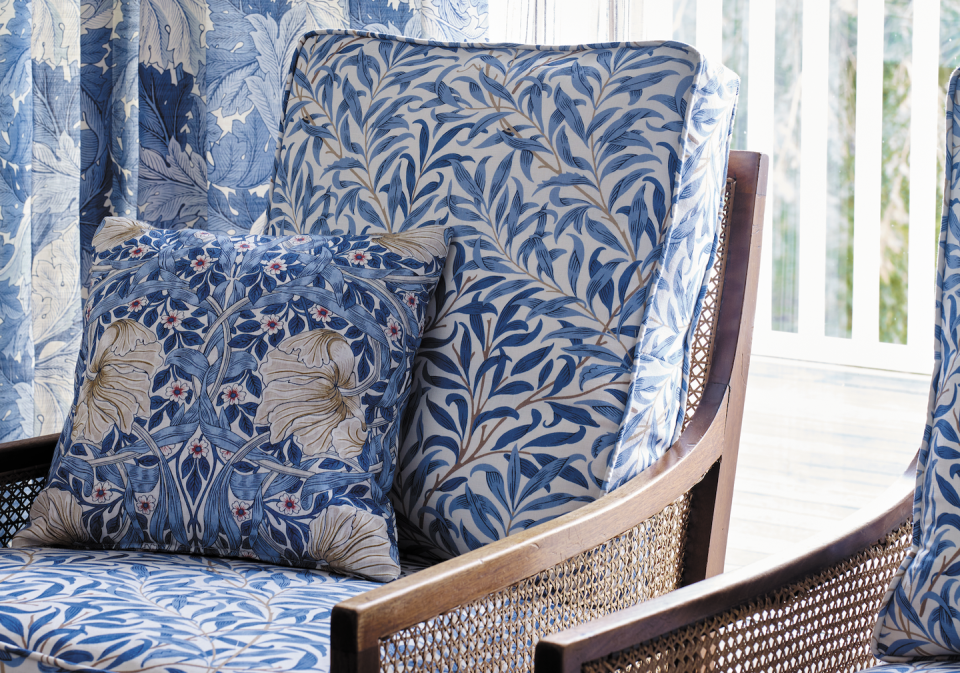
But his influence is felt across the pond, too, with artists, brands, and designers gravitating to his often fantastical, nature-centric prints. "Morris & Co. pattern prints are cleverly constructed with a strong sense of geometry underlying their organic shapes, and this makes them solidly elegant and harmonious to live with," Protheroe explains of their continued relevance.
But still, she says, that doesn't mean their popularity has remained constant. "They’ve enjoyed seismic surges of visibility and popularity over the years, and this must have something to do with the alchemy of certain times. We are at a political moment in history and we want big ideas and remarkable beauty."
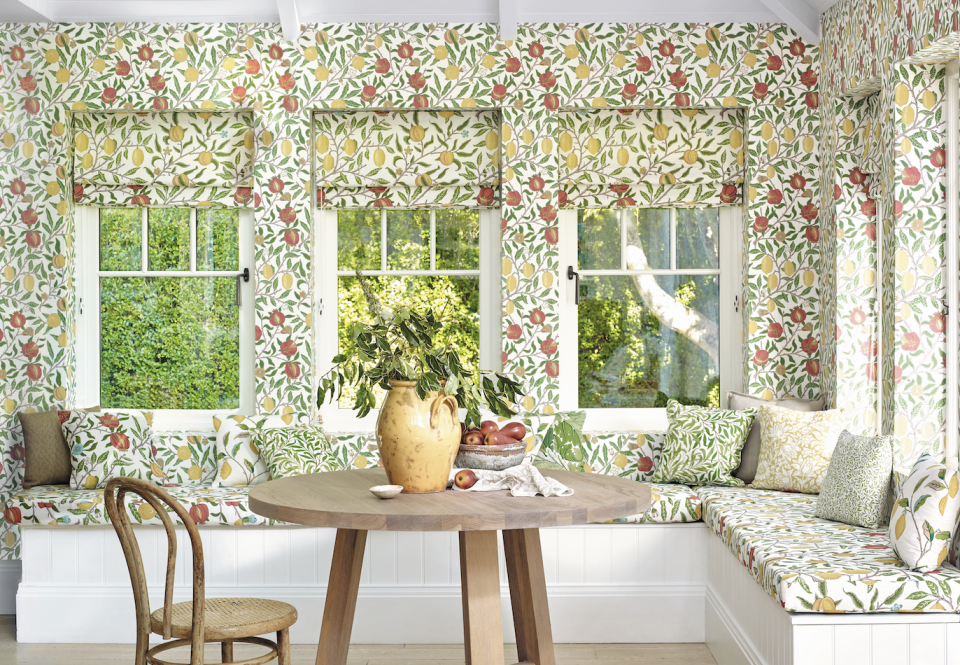
Where can you find his work now?
Morris & Co. continues to produce original Morris designs, as well as updates that riff on motifs and core principles in the seminal designer's work—like the Simply Morris line, which has distilled some of Morris's best-known patterns down to simpler motifs, resulting in a more modern take on the romantic designs.
"Every new Morris collection starts with the design team’s visit to the archive and a discussion about the focus of the project, whether that’s a particular Morris house, person, landscape, color story, or other theme," explains Protheroe. That is to say, nothing is too far removed from Morris himself. And that's not too hard, given his immense influence and prolific output. "We are lucky that Morris’s interests were wide-ranging so there’s never a shortage of ideas."
s
Follow House Beautiful on Instagram.
You Might Also Like

